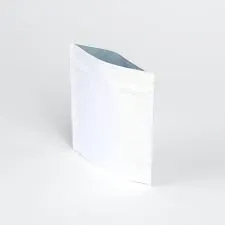- Afrikaans
- Albanian
- Amharic
- Arabic
- Armenian
- Azerbaijani
- Basque
- Belarusian
- Bengali
- Bosnian
- Bulgarian
- Catalan
- Cebuano
- chinese_simplified
- chinese_traditional
- Corsican
- Croatian
- Czech
- Danish
- Dutch
- English
- Esperanto
- Estonian
- Finnish
- French
- Frisian
- Galician
- Georgian
- German
- Greek
- Gujarati
- haitian_creole
- hausa
- hawaiian
- Hebrew
- Hindi
- Miao
- Hungarian
- Icelandic
- igbo
- Indonesian
- irish
- Italian
- Japanese
- Javanese
- Kannada
- kazakh
- Khmer
- Rwandese
- Korean
- Kurdish
- Kyrgyz
- Lao
- Latin
- Latvian
- Lithuanian
- Luxembourgish
- Macedonian
- Malgashi
- Malay
- Malayalam
- Maltese
- Maori
- Marathi
- Mongolian
- Myanmar
- Nepali
- Norwegian
- Norwegian
- Occitan
- Pashto
- Persian
- Polish
- Portuguese
- Punjabi
- Romanian
- Russian
- Samoan
- scottish-gaelic
- Serbian
- Sesotho
- Shona
- Sindhi
- Sinhala
- Slovak
- Slovenian
- Somali
- Spanish
- Sundanese
- Swahili
- Swedish
- Tagalog
- Tajik
- Tamil
- Tatar
- Telugu
- Thai
- Turkish
- Turkmen
- Ukrainian
- Urdu
- Uighur
- Uzbek
- Vietnamese
- Welsh
- Bantu
- Yiddish
- Yoruba
- Zulu
sachet dessicant
Understanding Sachet Desiccants Importance, Uses, and Best Practices
Sachet desiccants are small packets filled with materials designed to absorb moisture from their surroundings. These seemingly simple yet effective tools play a vital role in preserving the quality and longevity of various products across numerous industries. As moisture can lead to spoilage, degradation, or malfunction of products, the role of sachet desiccants cannot be understated.
What Are Sachet Desiccants?
Sachet desiccants are typically made from materials such as silica gel, activated clay, or molecular sieves. These substances possess high absorption capabilities, allowing them to attract and retain moisture vapor from the air. Sachets are often sealed in breathable materials, allowing humidity to pass through while preventing the desiccant material from spilling or leaking.
These packets come in various sizes and package types, often labeled with warnings, such as “Do Not Eat,” due to the chemical nature of their contents. Commonly found in packaging for electronic devices, shoes, and food items, sachet desiccants serve as a barrier against the detrimental effects of humidity.
Importance of Sachet Desiccants
The significance of sachet desiccants is particularly apparent in industries where moisture control is critical. For example, in the electronics sector, excess moisture can lead to corrosion, short circuits, and other failures that compromise the functionality of devices. Similarly, in the food industry, moisture can promote the growth of mold and bacteria, leading to spoilage and waste.
Sachet desiccants are also essential in the pharmaceutical industry, where humidity can affect the stability and efficacy of medication. By keeping drugs within a controlled environment, desiccants help retain their potency over time, ensuring that patients receive safe and effective treatments.
Furthermore, sachet desiccants play a role in preventing damage to leather goods, textiles, and other materials sensitive to humidity. By maintaining a dry environment, they help preserve the quality and extend the lifespan of various products.
sachet dessicant

Uses of Sachet Desiccants
Sachet desiccants are employed in a broad range of applications
. They are commonly found in1. Electronics To prevent moisture damage in devices like smartphones, laptops, and cameras. 2. Food In packaging for snacks, spices, and dried foods to maintain crispness and prevent spoilage. 3. Pharmaceuticals To protect medications from moisture, ensuring their effectiveness. 4. Leather Goods To prevent mold and degradation of leather products, enhancing their durability. 5. Clothing and Textiles Included in packaging to inhibit mildew and musty odors.
Best Practices for Using Sachet Desiccants
To maximize their effectiveness, it is essential to follow certain best practices when using sachet desiccants
1. Select the Right Type Choose a desiccant that suits the specific requirements of the product. Silica gel is ideal for electronics, while clay-based desiccants may work well for food items. 2. Proper Placement Position the sachets effectively within the packaging to ensure that they can absorb moisture efficiently.
3. Monitor Humidity Regularly check the humidity levels in storage areas or packaging to determine if the desiccants need replacement or replenishment.
4. Avoid Reusing Most sachet desiccants are designed for single-use and should not be reused as their absorption capacity diminishes over time.
In conclusion, sachet desiccants are indispensable tools for moisture control in numerous industries. Their ability to protect products from the harmful effects of humidity ensures quality and extends the life of various goods. By understanding their importance and adhering to best practices, businesses and consumers alike can benefit from the advantages these small packets offer.













